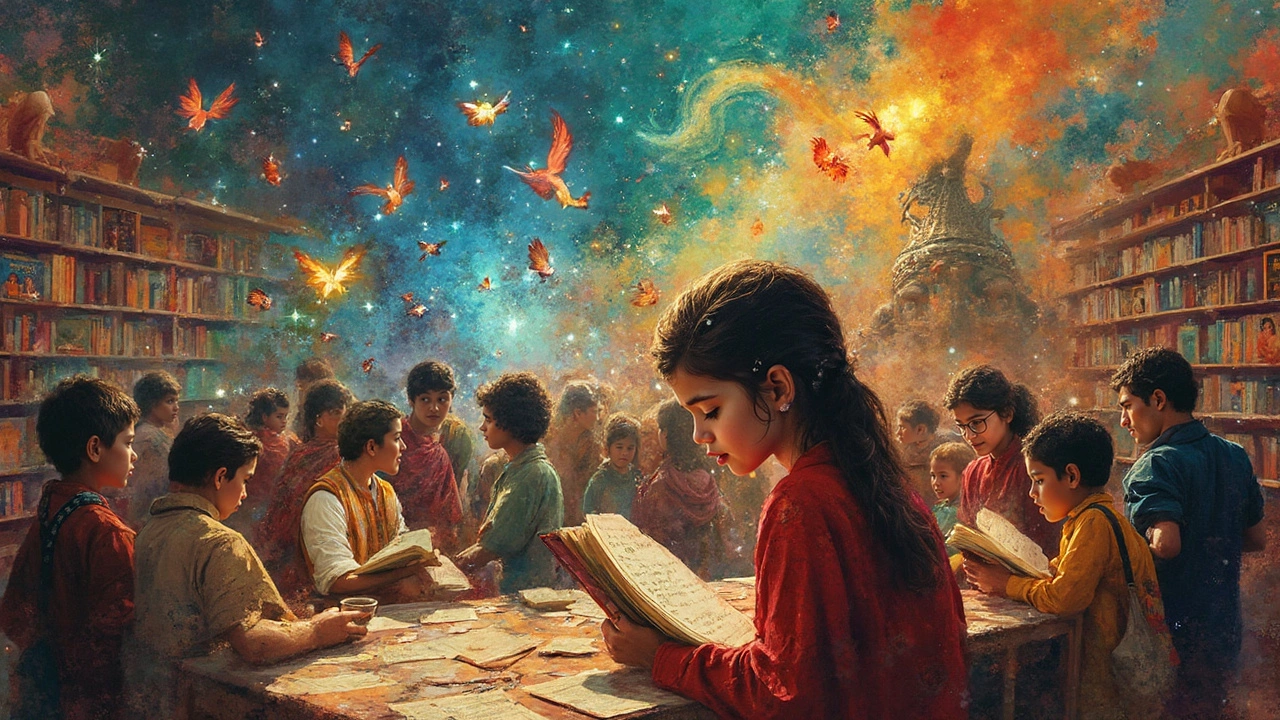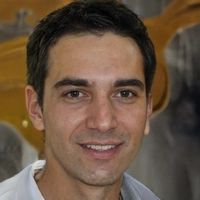Ever wondered how someone can get so rich from making up stories? The first billionaire author didn’t just sell books—they built an empire. Fantasy gave them the launchpad, but it wasn’t the only ingredient. Fans lined up at bookstores at midnight. Movie deals, toys, games, theme parks—all followed the original pages.
If you’ve ever wanted to write your own fantasy series and secretly hoped to buy an island someday, there’s a lot to learn from this story. It’s not just about magical worlds and clever wizards. It’s about branding, timing, and knowing what your readers want before they do.
The real surprise? It wasn’t some old-school literary classic or an epic from a century ago. The first billionaire author comes from the modern fantasy era, proving that a good story—and brilliant business sense—can change your life.
- JK Rowling’s Road to Billionaire Status
- Harry Potter and the Cash Explosion
- Smart Moves Outside the Books
- How Fantasy Changed Author Earnings
- What New Writers Can Learn
JK Rowling’s Road to Billionaire Status
The story of JK Rowling turning into the world's first billionaire author is the stuff of modern legend—and it didn’t happen overnight. Back in the early 1990s, Rowling was a single mom living on government assistance in Edinburgh, Scotland, with Harry Potter’s first adventure written in coffee shops while her baby daughter slept. “I had nothing to lose and sometimes that makes you brave enough to try,” she told BBC Radio 4 in 2015.
In 1997, Bloomsbury took a chance on “Harry Potter and the Philosopher’s Stone.” The first print run? Just 500 copies. Within a few years, her books had become the most talked-about series in the world, smashing sales records everywhere. Rowling’s rise was so stunning that in 2004, Forbes named her the first author to reach billionaire status primarily from book sales.
“To call JK Rowling’s achievements unprecedented is almost an understatement. Her books sold over 500 million copies, and even those numbers keep climbing.” – The Guardian, July 2018
Most of her fortune started with the books themselves, but smart negotiation for U.S. rights brought in a reported $105,000—huge for an unknown author at the time. Things snowballed with blockbuster movie deals (Warner Bros. paid a reported $1 million for the first two Harry Potter films) and a share in licensing for everything from games to butterbeer mugs.
Check out how it all stacked up as Rowling’s career took off:
| Year | Milestone | Estimated Wealth |
|---|---|---|
| 1997 | First book published | Under $10,000 |
| 2000 | Movie rights sold | $70 million |
| 2004 | Billionaire status recognized by Forbes | $1 billion+ |
| 2024 | Total copies sold reach 600 million+ | $1 billion+ (donations have lowered net worth at times) |
What propelled Rowling past every other author? She didn’t just cash checks—she kept control over big decisions, like approving major scripts or theme park plans. Another key move: holding onto digital and eBook rights and launching Pottermore herself, which meant she didn’t have to split profits with traditional retailers like Amazon or Barnes & Noble. That independence kept her wealth growing, even as the publishing world changed around her.
Harry Potter and the Cash Explosion
No other fantasy series kicked off a money storm quite like Harry Potter. After the first book hit shelves in 1997, it sold faster than anybody expected. By the time the final book dropped in 2007, the series had already sold over 325 million copies worldwide—and that’s not counting ebooks or spin-offs. These books flew out of stores in seventy-plus languages, making JK Rowling a household name and the first billionaire author.
But book sales were just the start. Warner Bros. got the movie rights for a reported $1.65 million in 1999, and the films went on to gross over $7.7 billion globally. It didn’t stop there; Harry Potter became a brand. There are video games, clothing lines, even fancy themed drinks at cafes.
“The Harry Potter publishing phenomenon is truly global, making J.K. Rowling the most successful children’s author in history.” — The Guardian (2007)
Here’s how the numbers stack up:
| Revenue Source | Estimated Earnings (USD) |
|---|---|
| Book Sales | $1.15 billion |
| Films (Box Office) | $7.7 billion |
| Merchandise | $7+ billion |
| Theme Parks | $1+ billion |
On top of all that, Rowling got royalties from every single movie ticket, toy, and t-shirt. It takes more than writing a story—Harry Potter showed how a strong brand and the right deals can turn a book into a global cash machine. If you’re writing fantasy, thinking bigger than the bookshelf might not be such a wild idea.

Smart Moves Outside the Books
JK Rowling’s journey to becoming the first billionaire author wasn’t just about selling millions of books. Her real wealth took off when she expanded her universe beyond the pages. Warner Bros. bought the film rights for the first four Harry Potter books in 1999, handing Rowling a check for about $2 million. That was just the start. Each new movie helped her earn a percentage of both ticket sales and DVD profits, piling up millions every single year the franchise stayed active.
But movies weren’t the only windfall. Rowling protected her copyright fiercely. She kept digital publishing rights for Harry Potter—something that was unusual back then. When eBooks took off, she launched her own site, Pottermore, in 2011. Instead of letting online retailers take a big chunk, she kept most of the earnings herself. That freedom meant she made money from every digital sale, worldwide, instead of getting just a small royalty.
Merchandise became another game-changer. The Harry Potter brand turned into board games, action figures, butterbeer mugs, phone cases—if you can name it, there’s probably a wizard version. Rowling made sure every product had her stamp of approval, which kept quality high and her earnings flowing. In 2010, Universal Studios opened the Wizarding World of Harry Potter. Rowling got a financial cut, plus a say in the theme park experience. The theme parks alone have brought in hundreds of millions and keep fans coming back for more (and spending money while they’re there).
One of her boldest moves was saying no to fast cash when she thought it would hurt the long-term brand. She didn’t allow Harry Potter-branded fast food meals or over-the-top licensing, even if the checks were huge. She focused on deals that fit the story and lasted. Writers eyeing big earnings can learn from that discipline: sometimes turning down money in the short term pays off years later.
- Hold on to your rights when you can, especially digital ones.
- Think about every piece of your world as a long-term brand, not just a one-hit book.
- Be picky about licensing—quality control beats quick cash.
- Explore new ways to connect with fans directly, like author-run websites or exclusive releases.
How Fantasy Changed Author Earnings
When you look at how writers earn money, fantasy books turned everything upside down. Before the late '90s, even successful authors usually saw their income flow from book sales and, if they got lucky, movie rights. But the rise of fantasy, led by series like Harry Potter, showed everyone just how much more could be made.
JK Rowling was the first to bust through the old limits. In just over a decade, her franchise exploded into more than fifty languages and pushed over 600 million books worldwide—numbers barely seen for any author, let alone one focused on magic wands and wizards.
This genre turned out to be perfect for building worlds that get fans hooked and wanting more. That obsession paid off in merchandise and spin-offs. Suddenly, fantasy authors and their publishers saw real cash from:
- movie adaptation deals (the Harry Potter films sit near the top of the all-time box office list)
- branded merchandise (think wands, house scarves, and Lego sets)
- theme park attractions (Universal Studios made The Wizarding World of Harry Potter a must-visit for fans)
- games, both board and video (the Hogwarts Legacy video game alone pulled in over a billion dollars by 2024)
- stage plays, like “The Cursed Child”
Suddenly, one popular idea—a magical school for kids—created a domino effect for profits. The old thinking that writers were destined to scrape by just didn’t make sense anymore, at least not for the biggest fantasy creators. Publishers and Hollywood learned that a killer fantasy franchise could lead to endless revenue streams well beyond just selling a stack of books.

What New Writers Can Learn
Chasing the dream of becoming the first billionaire author sounds wild, but there’s a lot you can copy from how JK Rowling did it. Let’s get practical about what actually moved the needle for her and what you can use to boost your own chances.
- Build a world, not just a story. Rowling didn’t just write about wizards—she made Hogwarts feel real. People wanted more than just the plot. They wanted to be part of that world. If you’re writing, spend time on those tiny details.
- Think about your audience first. Rowling built her books on suspense and humor that worked for kids and adults. She didn’t write for critics—she wrote for people who love stories.
- Say yes to smart deals. Rowling made smart moves with movie rights. She demanded creative control and a share in profits, not just a single payout. If you ever get an offer, look way beyond the first check.
- Don’t stick to just books. Harry Potter earned nearly as much from spin-offs (like theme parks and video games) as from actual book sales. If people want more, give them more—merch, events, even apps.
- Keep writing, no matter what. Rowling’s first book was rejected by 12 publishers. Sticking it out is part of the journey.
Check out some hard numbers that show where the money actually comes from:
| Source | Estimated Earnings (USD) |
|---|---|
| Book sales | $400 million+ |
| Movie royalties | $400 million+ |
| Theme parks | $100 million+ |
| Merchandise | $150 million+ |
Want another tip? Keep your rights as much as possible until you know their value. When you license your work, add rules and terms that protect what you built. This can mean more long-term money and more say in how your story looks outside the books.
Finally, pay attention to timing. Rowling hit at the right moment, just before movies and internet fandom exploded. Trend-watching and knowing what readers are craving right now can be the difference between a niche hit and a worldwide craze.

